
TREBARTHA HALL IN WORLD WAR II
|
During World War II Trebartha Hall was requisitioned by the government for military use.The hall was used by the British Army RAMC 48th Field Ambulance Unit during the 1941-1943 period. It was then occupied by the US Army as a base for the 268th Signal Construction Company until the time around D-Day in June 1944. Latterly, following the capitulation of Italy, it provided accommodation for Italian co-operators, previously Prisoners of War. The estate provided timber for London's construction industry and pit props for mining purposes from the woodland and this was supported by the Women's Land Army, the "Lumber Jills". The War Office handed back Trebartha Hall to the Latham family around 1948. |
If you have any anecdotes or information that can add to the story of Trebartha Hall during the war years, please get in touch. |
Trebartha Hall in 1939
The 1939 Register listing of UK residents shows Trebartha Hall occupied by the Rodd family, who owned the hall at that time, with servants.
| 1 | Rodd, Edward F S | Male | 16 Oct | [18]86 | Married | Landowner, JP, Major Retired |
| 2 | Rodd, Florence M W | Female | 28 Aug | [18]87 | Married | Wife, Women's Voluntary Service |
| 3 | Rodd*, Evelyn M S | Female | 8 Apr | [19]20 | Single | Women's Nursing Auxiliary *amended in 1946 to married surname of Mann |
| 4 | redacted | probably Hope or Elinor or Diana, daughters of Edward & Florence | ||||
| 5 | redacted | probably Hope or Elinor or Diana, daughters of Edward & Florence | ||||
| 6 | Harris*, Vera | Female | 3 Mar | [19]23 | Single | Cook; * amended in 1948 to married surname of Sleep |
| 7 | redacted | probably a young house servant | ||||
| 8 | Landry, Emma J | Female | 17 May | [18]86 | Single | Housekeeper |
| 9 | Hunn, Alfred | Male | 22 Nov | [19]03 | Single | Butler |
| Note: Redacted rows are records of individuals who were born less than 100 years before the release of the register, and whose death had not been registered. This was done to protect their privacy if they were still alive. | ||||||
The ownership of the hall and estate was transferred from the Rodd family to the Latham family in 1940.
Royal Army Medical Corps (RAMC) 48th Field Ambulance
From The Museum of Military Medicine:
"The Field Ambulance (FA) was not a vehicle as we now know it but a large structure & an important element in the casualty evacuation system of the British Army. The FA comprised approximately 250 personnel which included 13 officers (doctors, administration officers & a surgeon), approximately 165 RAMC other ranks i.e., NCO’s & soldiers, & 50-60 personnel from the Army Service Corps who were responsible for the driving & maintenance of all the FA’s vehicles as well as the upkeep of all other auxiliary equipment...
"The primary duty of the FA was to collect the sick & wounded and to arrange for their proper clearance down (for further treatment) or, up (back to the front) the evacuation chain. Each British Army division was provided with 3 FA’s each of which comprised a Headquarters (HQ) & two companies. The former retained the more elaborate medical & surgical equipment and the ordnance equipment, forming the Main Dressing Station (MDS). Each of the latter had equipment, stretcher bearer squads & personnel to populate the Advanced Dressing Station (ADS). The FA was essentially a mobile unit, providing the simplest accommodation and treatment for the sick and wounded.  Anything of a more serious nature was to be passed on down the evacuation chain. There were four imperatives that the men at the FA were to perform: all fractures were to be splinted; haemorrhaging to be controlled; shock to be treated & tetanus serum was to be administered. The MDS & ADS operated within a few miles of the battle front.
Anything of a more serious nature was to be passed on down the evacuation chain. There were four imperatives that the men at the FA were to perform: all fractures were to be splinted; haemorrhaging to be controlled; shock to be treated & tetanus serum was to be administered. The MDS & ADS operated within a few miles of the battle front.
"On enlisting, volunteering or conscripted into the British Army all soldiers received basic training in military discipline, drill and musketry. Following this the RAMC recruit would have received instruction in the following: stretcher bearer training & tent exercises (assembling and disassembling); camp procedures, bivouacs and field cooking; administration in the medical services; gas warfare countermeasures; anatomy, physiology and first aid; nursing & finally, food, nutrition and cooking. Once this was completed, he would be classed as a 'Nursing Orderly'. He would then have been posted to one of the numerous types of units i.e. General Hospital, Fields Ambulance, Casualty Clearing Station, Hospital Train, Hygiene Section etc. that comprised the RAMC. A soldier may also specialise i.e. Operating theatre Assistant, Medical Clark etc. if their aptitude was apparent." Rob McIntosh MA AMA, Curator.
The first person we have discovered who was either staff or patient at the RAMC hospital was Percy Reid Hawkins of the Royal Warwickshire Regiment. He was brought to the hall in October 1940 and sadly died there on 22nd October 1940. It was this knowledge that prompted the research into Trebartha Hall's war years.
United States Army, 268 Signal Construction Company
In his book "Trebartha, The House By The Stream" the then owner of Treabrtha Hall, Bryan Latham, describes the time that the 268 were stationed in the hall:
"By 1943 the British Army had moved out of the manor and were replaced by a U.S.A. regiment who remained in occupation until they embarked at Plymouth in June 1944, their destination being the Omaha beaches in Normandy. They caused the estate no trouble at all, except for the curious incident of the billiard table. The British troops had the use of a billiard table belonging to the estate, and in due course, the Americans signed for it when they took over the stores. After a few months rumours reached us that it had vanished from the manor house, and so it had! Local American H.Q. on being informed denied all knowledge of such a billiard table, but local Iriends who had played friendly games of billiards with a U.S.A. unit in Launceston positively identified the table, having known it in Trebartha before the war. It had evidently taken wings and flown. To the bitter end, local H.O. denied any knowledge of the whereabouts of the table, but as they paid about four times its secondhand value in compensation for its loss, who could complain?
The information that the "U.S.A. regiment" as described in this extract was the 268 Signal Construction Company can be found on the Lest We Forget website.
The 268 was created in May 1942 and was, according to contemporary US Miltary records:
"Assigned to Seventh Service Command ... Activated with Negro enlisted personnel at C[am]p Crowder, Mo". 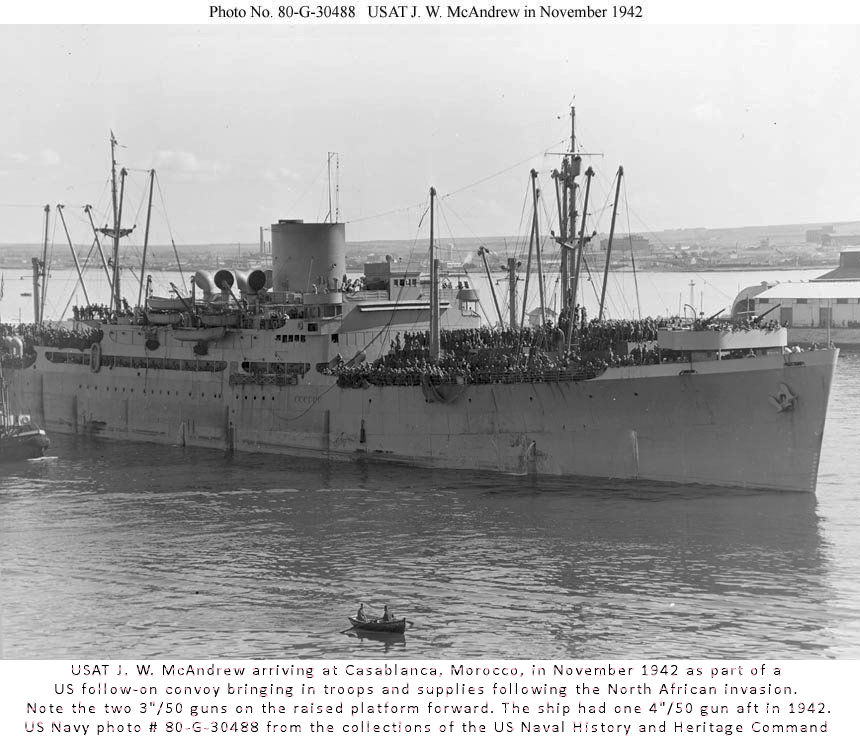
Camp Crowder was located on the edge of the town of Neosho, Missouri about 70 miles WSW of Springfield. During World War II, Camp Crowder became the duty location for contingents of the Women's Army Corps, the home to a Signal Corps Replacement Training Center, and provided basic training to new recruits. On the 1st September 1943 the 268 was redesignated as the 268th Signal Heavy Construction Company and was reorganised and manned with African American soldiers who had been trained at the camp. The company transferred from the camp in February 1944 to the UK, via Boston, Ma., aboard the troopship USAT J S McAndrew.
The 268's time at Trebartha could not have been very long as, according to the US Army "Unit Citation and Campaign Participation Credit Register page 237" and the US Army "WDLS", the 268 Signal Construction Company served in these locations after their sojourn at Trebartha:
- 6 June 1944 to 24 July 1944 - Normandy (#30)
- 25 July 1944 to 14 September 1944 - Northern France (#32)
- 15 September 1944 to 21 March 1945 - Rhineland (#34)
- 16 December 1944 to 25 January 1945 - Ardennes/Alsace (#25)
- 22 March 1945 to 11 May 1945 - Central Europe (#26)
We are grateful for the assistance provided by Florian Kardoskee (Librarian, U.S. Army Center of Military History (CMH)) and Steven J. Rauch (Signal Corps Branch Historian, Signal History Office, Office Chief of Signal, US Army Signal School) for their assistance in compiling this part of the history of the 268.
Note: Readers local to North Hill and Launceston may be aware of The Battle of Launceston in 1942. The 268 were not in the UK at the time and are not associated with that event in any way.
Italian "Prisoners of War"
Italian Prisoners of War (PoW) provided one way of alleviating labour shortages, particularly in agriculture. Initial British perceptions that most captured Italians were uncommitted to Fascism and pleased to be out of the war seem to have been borne out; so much so that in spite of security concerns, the import of Italian prisoners to the United Kingdom was being actively discussed early in 1941 to alleviate a grievous shortage of labour on the home front. The first contingents of a planned 25,000 arrived on British soil in July of that year to be held in purpose-built camps
Following the Italian surrender in 1943, meaning that Italy was now an ally and not an enemy, the status of about 100,000 Italian PoWs changed from 'prisoner' to 'co-operator'. These were those PoWs who chose to volunteer to work in the war effort, usually in agriculture. They were given considerable freedom and mixed with local people. 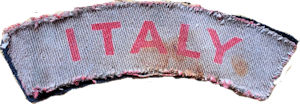 This was the case with the Italian co-operators who had previously been held in the PoW camp at Pennygillam in Launceston.
This was the case with the Italian co-operators who had previously been held in the PoW camp at Pennygillam in Launceston.
The prisoners' uniforms were changed to a brown battledress with the “Italy” shoulder title and was later changed again to a uniform more closely resembling the Italian uniform, at which stage both the Shoulder Title and a Service Stripe were worn.
For more on The Fate of Italian Prisoners of War read Moore, B. (2015) Enforced Diaspora: The Fate of Italian Prisoners of War during the Second World War. War in History, 22 (2). 174 - 190. ISSN 0968-3445.
The lives of the Italians who were billeted in North Hill has not been recorded, except in Bryan Latham's book. Local knowledge remembers that the downhill section of the hedge* of South Battens on the B3254 was built by them. * it is common in Cornwall to describe field boundaries as hedges, regardless of construction
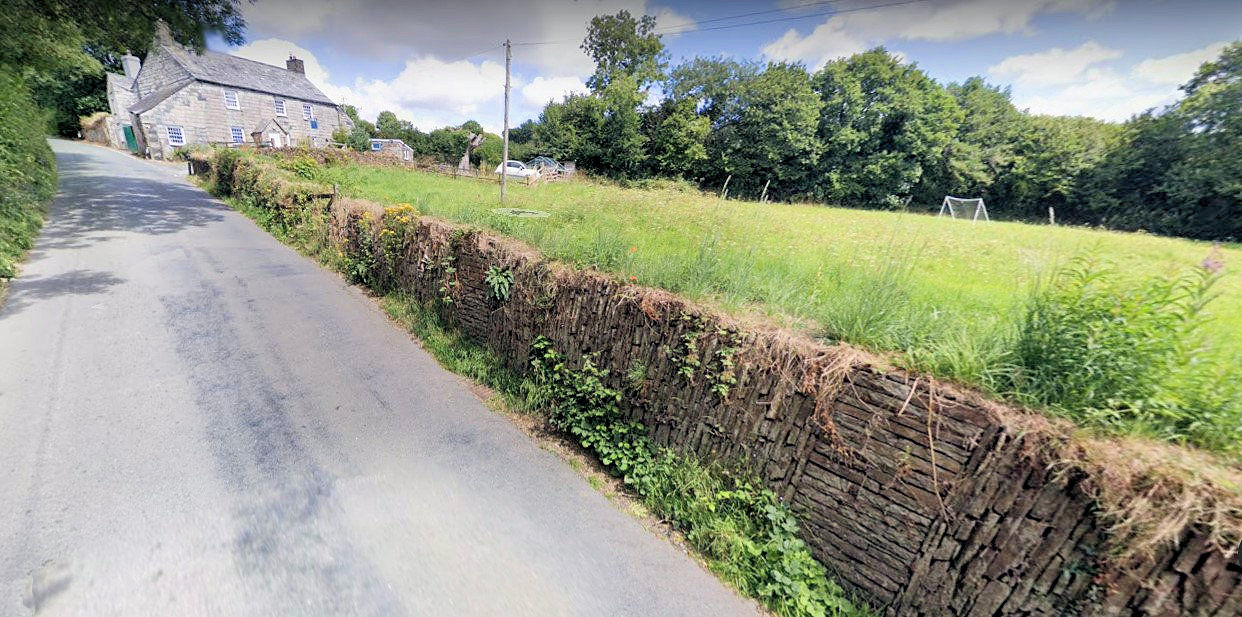
B3254 showing the hedge leading up to South Battens
Women's Land Army - Women's Timber Corps (Lumber Jills)
Further extracts from "Trebartha, The House by the Stream" by Bryan Latham talking about the Lumber Jills:
"Meanwhile, as our [timber] operations gathered weight, the finding of enough labour became a constant preoccupation, as more and more young men were taken for the forces. It was then that the girls came to the rescue. The Women's Land Army had of course been working on the land since the outbreak of the war. 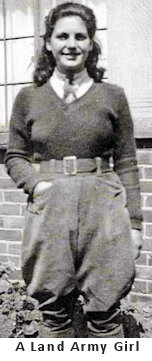 However, in 1942, ... the Ministry of Labour allowed a branch of the W.L.A. to be recruited to work in sawmills engaged in home-grown timber production. There was a good response and the girls soon became popularly known as “lumber jills". Trebartha recruited six of the girls, and billeted them amongst the farms. Billeting money was good and the farmers and their wives were glad to have them. Molly and Mary were both from London: Mary was a secretary and Molly worked at County Hall. They were great friends and both billeted at Stonaford. Both girls were mad about horses ...
However, in 1942, ... the Ministry of Labour allowed a branch of the W.L.A. to be recruited to work in sawmills engaged in home-grown timber production. There was a good response and the girls soon became popularly known as “lumber jills". Trebartha recruited six of the girls, and billeted them amongst the farms. Billeting money was good and the farmers and their wives were glad to have them. Molly and Mary were both from London: Mary was a secretary and Molly worked at County Hall. They were great friends and both billeted at Stonaford. Both girls were mad about horses ...
 "Most of the 'lumber jills' were employed in the sawmills and as stackers, but Molly and Mary so paired up for felling and with a light saw they brought down hundreds of pitwood trees. Another very good worker was a Mrs. King from New Zealand. She had been evacuated from Singapore before the Japanese invasion, and as it was impossible to return to her home in New Zealand she was brought to England and remained there for the duration of the war. The girls working with us were as fortunate as most; they had good billets and plenty of country recreation. But as there was a shortage of bathrooms at Trebartha at the time, Mrs. Knowles kindly allowed her bath at Mill Cottage to be leased out to bathers twice weekly …
"Most of the 'lumber jills' were employed in the sawmills and as stackers, but Molly and Mary so paired up for felling and with a light saw they brought down hundreds of pitwood trees. Another very good worker was a Mrs. King from New Zealand. She had been evacuated from Singapore before the Japanese invasion, and as it was impossible to return to her home in New Zealand she was brought to England and remained there for the duration of the war. The girls working with us were as fortunate as most; they had good billets and plenty of country recreation. But as there was a shortage of bathrooms at Trebartha at the time, Mrs. Knowles kindly allowed her bath at Mill Cottage to be leased out to bathers twice weekly …
"Sterling Wood had not been touched at that time, but further to the east the 'lumber jills' had made good progress felling pitprops in Castick Plantation ...
"Labour was provided by promoting the assistant sawyer and obtaining the services of several additional 'lumber jills', this time local girls who we were now allowed to enlist ...
"The lady commandant in charge of the sawmill girls' section of the Women's Land Army visited us regularly to supervise the welfare of our 'lumber jills' but ours were a happy lot with good billets. Mr. Knowles was very good at arranging suitable work for them, well within their capacity, whilst Mrs. Knowles was always going out of her way to provide social amenities. The girls' leave or holiday arrangements were quite liberal, they were given all six Bank Holidays. A week's holiday after six months' service with pay and a railway voucher. After that they had another week's holiday with pay and a railway voucher; and another seven days a year if they liked to take it without pay. At this time our felling was done by a mixed bag of labour. Molly and Mary were on pitprops in Lemarne plantation; two able-bodied men were felling oak and beech for the sawmill in Bowdanodden Wood; and elderly man and a lad were at work in Hawk's Wood; whilst two more lumber jills, Joyce and Margaret, had been promoted to felling pitprops in Castick."
Trebartha Hall Handed Back by The War Office
The issue of compensation for the use of the hall during the war years and afterwards was contentious, as described by Bryan Latham in "Trebartha, The House By The Stream":
"I must now revert in time and relate the tortuous negotiations leading up to the handing back of the Manor House. In the autumn of 1946 the Italian prisoners left for home, to the regret of the local farmers who had found them willing and adaptable workers, so the manor house stood empty and derelict. The desolate wreck of a proud manor house whose rooms had once echoed to the footste of Spoures, Tremaynes, Rashleighs and Rodds. Early in 1947 the War Office started a leisurely correspondence on derequisitioning the place. An inspector came and after seeing the damage, gave his opinion that the W.O. would take advantage of a clause in the Act and pay a total loss based on 1938 values. This was rejected by his superiors, although why in view of the ridiculously low offer they ultimately made, nobody can tell. So, a surveyor came from Taunton and started valuing the dilapidations. After a few days he had had enough and reported back that the only possible basis was a complete write-off. We asked for the sum we had insured the buildings at when we took possession in 1940 and I will not sully these pages by mentioning the sum the War Office originally offered. I will merely say that after two years' negotiations we received the identical sum which I had written in my notebook in July 1940 as being the value of the house and outbuildings when I summed up the assets we were buying. Clearly the place had to come down and the sooner the better, as it was being broken into by undesirable people and pillaged. We enquired amongst housebreakers and received two offers. The estate to pay £50 to have it demolished, and the other to receive £50. We quickly accepted the second offer and the contractors made a good job of the clearance. It was a time of shortages and they readily recouped their outlay by the sale of second-hand timber, lead and slate from the roofs and glass from the windows."
The extent of the demolition
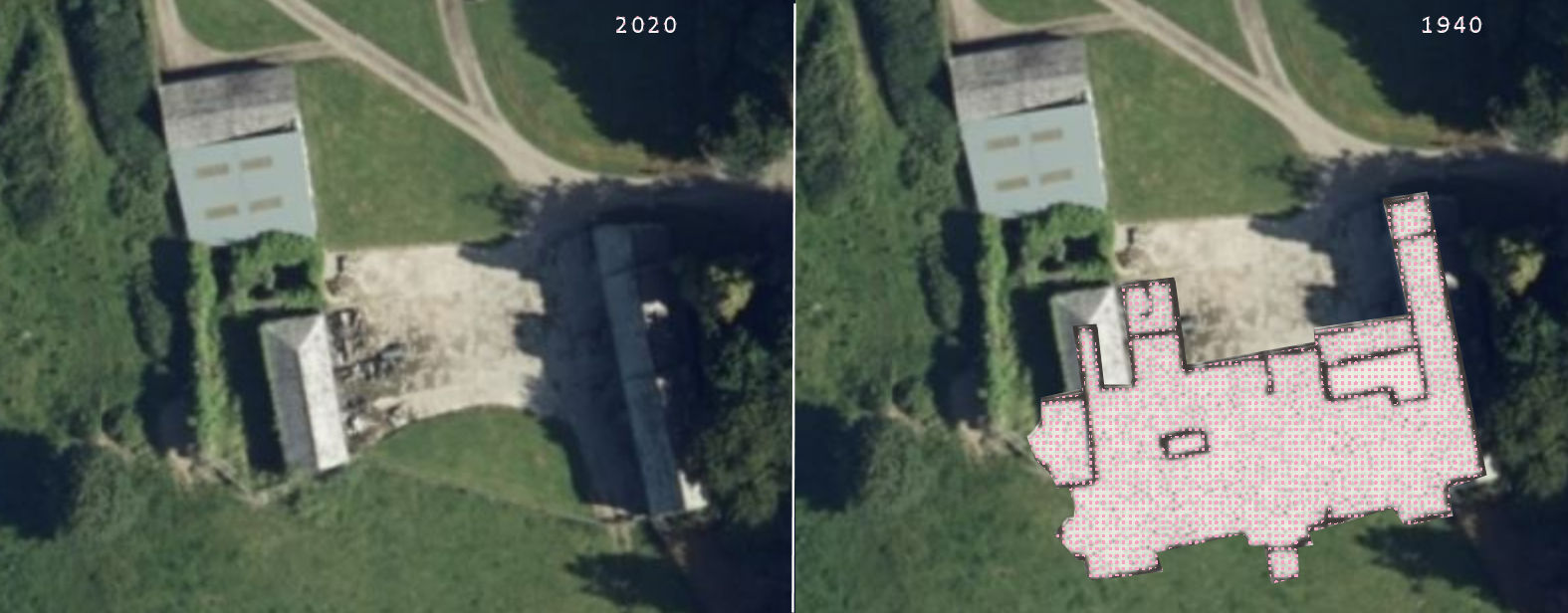
The story of the final demolition of Trebartha Hall is told in a newspaper article from 1949. Click on either of the images below to read "The Sale and Demolition of Trebartha Hall".
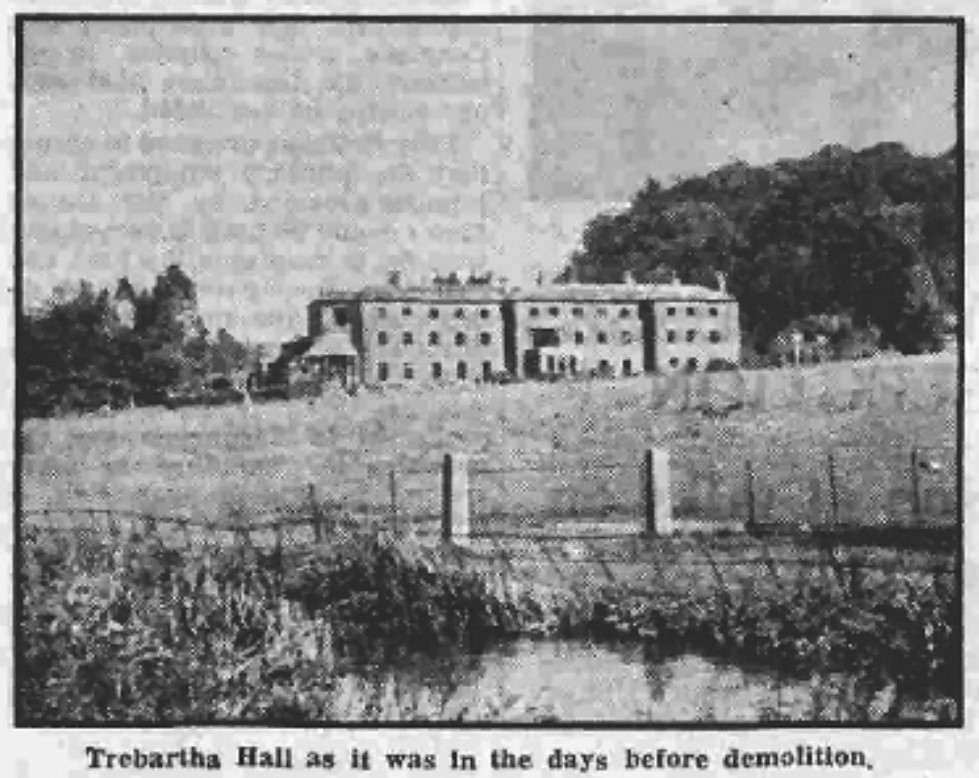

Women's Land Army - Women's Timber Corps (Lumber Jills)
Further extracts from "Trebartha, The House by the Stream" by Bryan Latham talking about the Lumber Jills:
"Meanwhile, as our [timber] operations gathered weight, the finding of enough labour became a constant preoccupation, as more and more young men were taken for the forces. It was then that the girls came to the rescue. The Women's Land Army had of course been working on the land since the outbreak of the war.  However, in 1942, ... the Ministry of Labour allowed a branch of the W.L.A. to be recruited to work in sawmills engaged in home-grown timber production. There was a good response and the girls soon became popularly known as “lumber jills". Trebartha recruited six of the girls, and billeted them amongst the farms. Billeting money was good and the farmers and their wives were glad to have them. Molly and Mary were both from London: Mary was a secretary and Molly worked at County Hall. They were great friends and both billeted at Stonaford. Both girls were mad about horses ...
However, in 1942, ... the Ministry of Labour allowed a branch of the W.L.A. to be recruited to work in sawmills engaged in home-grown timber production. There was a good response and the girls soon became popularly known as “lumber jills". Trebartha recruited six of the girls, and billeted them amongst the farms. Billeting money was good and the farmers and their wives were glad to have them. Molly and Mary were both from London: Mary was a secretary and Molly worked at County Hall. They were great friends and both billeted at Stonaford. Both girls were mad about horses ...
 "Most of the 'lumber jills' were employed in the sawmills and as stackers, but Molly and Mary so paired up for felling and with a light saw they brought down hundreds of pitwood trees. Another very good worker was a Mrs. King from New Zealand. She had been evacuated from Singapore before the Japanese invasion, and as it was impossible to return to her home in New Zealand she was brought to England and remained there for the duration of the war. The girls working with us were as fortunate as most; they had good billets and plenty of country recreation. But as there was a shortage of bathrooms at Trebartha at the time, Mrs. Knowles kindly allowed her bath at Mill Cottage to be leased out to bathers twice weekly …
"Most of the 'lumber jills' were employed in the sawmills and as stackers, but Molly and Mary so paired up for felling and with a light saw they brought down hundreds of pitwood trees. Another very good worker was a Mrs. King from New Zealand. She had been evacuated from Singapore before the Japanese invasion, and as it was impossible to return to her home in New Zealand she was brought to England and remained there for the duration of the war. The girls working with us were as fortunate as most; they had good billets and plenty of country recreation. But as there was a shortage of bathrooms at Trebartha at the time, Mrs. Knowles kindly allowed her bath at Mill Cottage to be leased out to bathers twice weekly …
"Sterling Wood had not been touched at that time, but further to the east the 'lumber jills' had made good progress felling pitprops in Castick Plantation ...
"Labour was provided by promoting the assistant sawyer and obtaining the services of several additional 'lumber jills', this time local girls who we were now allowed to enlist ...
"The lady commandant in charge of the sawmill girls' section of the Women's Land Army visited us regularly to supervise the welfare of our 'lumber jills' but ours were a happy lot with good billets. Mr. Knowles was very good at arranging suitable work for them, well within their capacity, whilst Mrs. Knowles was always going out of her way to provide social amenities. The girls' leave or holiday arrangements were quite liberal, they were given all six Bank Holidays. A week's holiday after six months' service with pay and a railway voucher. After that they had another week's holiday with pay and a railway voucher; and another seven days a year if they liked to take it without pay. At this time our felling was done by a mixed bag of labour. Molly and Mary were on pitprops in Lemarne plantation; two able-bodied men were felling oak and beech for the sawmill in Bowdanodden Wood; and elderly man and a lad were at work in Hawk's Wood; whilst two more lumber jills, Joyce and Margaret, had been promoted to felling pitprops in Castick."
Trebartha Hall Handed Back by The War Office
The issue of compensation for the use of the hall during the war years and afterwards was contentious, as described by Bryan Latham in "Trebartha, The House By The Stream":
"I must now revert in time and relate the tortuous negotiations leading up to the handing back of the Manor House. In the autumn of 1946 the Italian prisoners left for home, to the regret of the local farmers who had found them willing and adaptable workers, so the manor house stood empty and derelict. The desolate wreck of a proud manor house whose rooms had once echoed to the footste of Spoures, Tremaynes, Rashleighs and Rodds. Early in 1947 the War Office started a leisurely correspondence on derequisitioning the place. An inspector came and after seeing the damage, gave his opinion that the W.O. would take advantage of a clause in the Act and pay a total loss based on 1938 values. This was rejected by his superiors, although why in view of the ridiculously low offer they ultimately made, nobody can tell. So, a surveyor came from Taunton and started valuing the dilapidations. After a few days he had had enough and reported back that the only possible basis was a complete write-off. We asked for the sum we had insured the buildings at when we took possession in 1940 and I will not sully these pages by mentioning the sum the War Office originally offered. I will merely say that after two years' negotiations we received the identical sum which I had written in my notebook in July 1940 as being the value of the house and outbuildings when I summed up the assets we were buying. Clearly the place had to come down and the sooner the better, as it was being broken into by undesirable people and pillaged. We enquired amongst housebreakers and received two offers. The estate to pay £50 to have it demolished, and the other to receive £50. We quickly accepted the second offer and the contractors made a good job of the clearance. It was a time of shortages and they readily recouped their outlay by the sale of second-hand timber, lead and slate from the roofs and glass from the windows."
The extent of the demolition

The story of the final demolition of Trebartha Hall is told in a newspaper article from 1949. Click on either of the images below to read "The Sale and Demolition of Trebartha Hall".
The banner images at the top of the page show the WW2 cap badge of the Royal Army Medical Corps and the US Army Signals Construction Company arm badge, either side of a view of Trebartha Hall from across the Swan Pool. |

